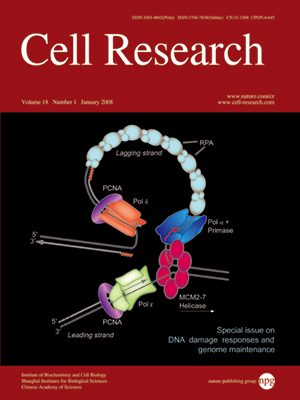
Volume 18, No 1, Jan 2008
ISSN: 1001-0602
EISSN: 1748-7838 2018
impact factor 17.848*
(Clarivate Analytics, 2019)
Volume 18 Issue 1, January 2008: 8-16
REVIEWS
The DNA damage response pathways: at the crossroad of protein modifications
Michael SY Huen1, Junjie Chen1
1Department of Therapeutic Radiology, Yale University School of Medicine, New Haven, CT 06520, USA
Correspondence: Junjie Chen(junjie.chen@yale.edu)
Post-translational modifications play a crucial role in coordinating cellular response to DNA damage. Recent evidence suggests an interplay between multiple protein modifications, including phosphorylation, ubiquitylation, acetylation and sumoylation, that combine to propagate the DNA damage signal to elicit cell cycle arrest, DNA repair, apoptosis and senescence. Utility of specific post-translational modifiers allows temporal and spatial control over protein relocalization and interactions, and may represent a means for trans-regulatory activation of protein activities. The ability to recognize these specific modifiers also underscores the capacity for signal amplification, a crucial step for the maintenance of genomic stability and tumor prevention. Here we have summarized recent findings that highlight the complexity of post-translational modifications in coordinating the DNA damage response, with emphasis on the DNA damage signaling cascade.
Cell Research (2008) 18:8-16. doi: 10.1038/cr.2007.109; published online 18 December 2007
FULL TEXT | PDF
Browse 1900


